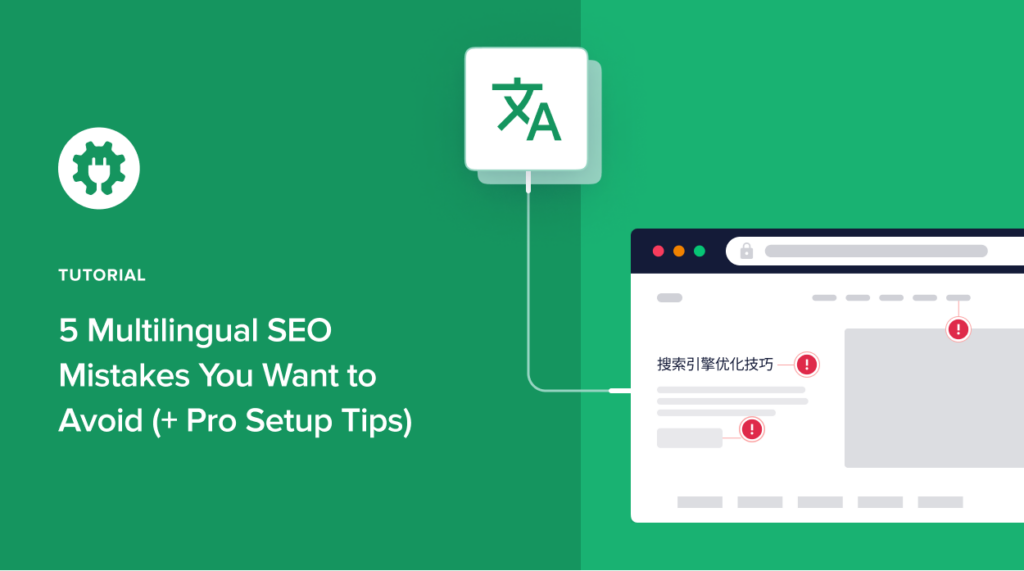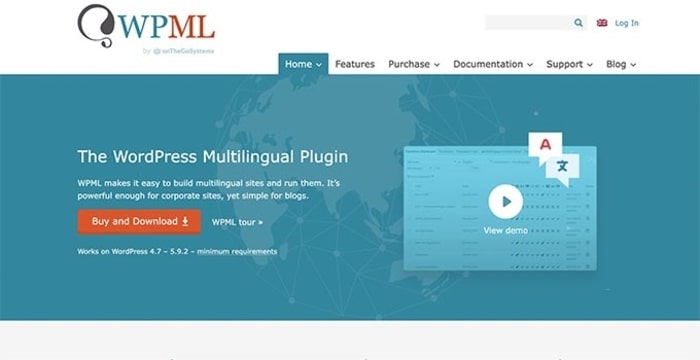Want to master multilingual SEO?
Getting multilingual SEO right can be tricky because there are so many moving parts.
However, if your business targets customers in different geographic locations, then your success will depend on your ranking for local SEO keywords.
And that’s why winning at multilingual SEO matters.
In this article, we’ll show you the top multilingual SEO mistakes to avoid. We’ll also share some pro tips to help you rank for local keywords and search terms in multiple regions.
What is Multilingual SEO?
Multilingual SEO is the practice of improving a website’s ranking and discoverability in local language searches across multiple countries. When done right, multilingual SEO allows your website to rank for desired keywords in all languages especially if web pages are translated into multiple languages.
The Importance of Multilingual SEO
Translating your website into multiple languages has many benefits, but the main one is greater reach and higher conversions. That’s because multilingual SEO helps your content rank in other top languages, so your audience is not just limited to a particular demographic. Instead, you can reach a global audience, enabling you to grow your business much faster.
Implementing multilingual SEO also has the advantage of giving you a competitive edge. This is particularly true if your competitors haven’t implemented it yet.
5 Multilingual SEO Mistakes to Avoid
Now that you know what multilingual SEO is and why it’s important, let’s take a look at some of the most common mistakes to avoid. These mistakes can hurt your rankings, not just in other language searches, but also in your overall SEO rankings. That’s why it’s very important that you set your multilingual SEO the right way.
1. Overlooking the SEO Elements of Your Pages
One of the most common mistakes brands make in terms of multilingual SEO is overlooking the SEO elements of their websites. Instead, they only focus on visible parts of the page, particularly the content.
However, to boost your SEO, you must also consider the backend aspects of your website and pages. Examples include:
- Meta descriptions
- Meta tags
- URLs
- Image and video alt tags
Of course, if you’re translating your page into multiple languages, manually optimizing these can be laborious and time-consuming.
That’s why you need an SEO plugin like All In One SEO (AIOSEO).
AIOSEO is a powerful SEO toolkit trusted by over 3 million smart marketers to help them improve their rankings and drive traffic. This is because the plugin has powerful features to help you properly configure your SEO settings.
For those targeting many different geographical areas, a much-loved feature is our translations API. The translations API enables third-party translation plugins like WPML to hook into your AIOSEO data.
This makes it easy for you to translate the important SEO elements of your pages effectively. As a result, search engines understand your pages better, leading to improved rankings.
If you need detailed instructions on installing AIOSEO, then check out our installation guide.
2. Neglecting Localized Link Building
Another common mistake made when building a multilingual site is neglecting to localize link building.
Backlinks play a huge role in how search engines rank content. That’s why you must have a robust link-building strategy that includes building links from local websites in your target regions.
For example, if you want to reach an Italian audience, then you should build links from websites in Italy. Doing so will show search engines that the Italian pages are relevant to people within that geographic and linguistic demographic.
A few tips to help you build backlinks in your target regions include:
- Guest posting
- Listing your business in local directories
- Creating linkable assets like research, infographics, checklists, and more
For detailed instructions on how to build links, check out our ultimate link-building guide.
3. Relying on Google Alone for Search Traffic
While Google may be the dominant search engine globally, it’s not always dominant in all countries.
For example, most searches in China are done on Baidu, while Yandex is the go-to search engine in Russia, boasting a 49.02% market share. In most cases, these search engines are language-specific and require you to implement multilingual SEO best practices.
To win at multilingual SEO, you must consider all the major search engines in your area and the regions you’re targeting. Doing so will enable you to optimize your content more effectively, giving you a better chance of ranking in all your major target languages.
All in One SEO helps you properly optimize your website with all search engines, and you can even connect with their webmaster tools.
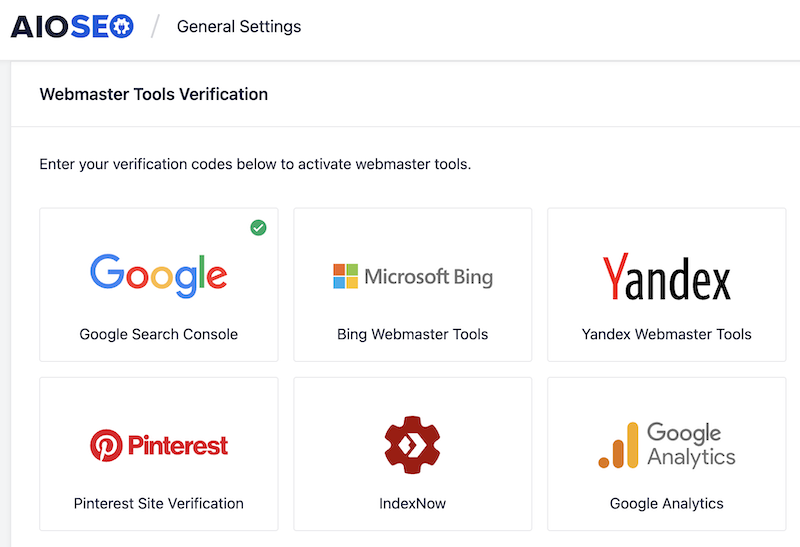
4. Poor Keyword Translation and Search Intent
Keyword research plays a central role in SEO. But unfortunately, some businesses don’t put a lot of thought into translating their keywords properly.
In many instances, direct translations of keywords don’t work. You end up missing the actual keywords that users are searching for. It also results in a failure to meet search intent.
One thing to remember when building multilingual websites is that it’s not just about language. Your website must be linguistically and culturally appropriate to have the desired impact.
That’s why you must enlist the help of a translations expert who’s knowledgeable about the language and culture in the locations you’re targeting. This will help ensure you’re using the right keywords and meeting the right search intent when translating your content.
5. Not Adding hreflang Attributes
If you run a multilingual site, then you must let search engines know that you serve pages in different languages on your website. The best way to do so is to add hreflang tags in the header section of the original page.
Here’s an example of the hreflang attribute:
link rel="alternate" href="http://example.com" hreflang="fr" />The hreflang attribute was designed to help search engines understand the language a web page is written in. This ensures that when a search is done in a particular language, the searcher gets served a page in their language.
When you’re using AIOSEO, this is done for you automatically.
How to Set Up Your Multilingual SEO Like a Pro
Now that you know the multilingual SEO pitfalls to avoid, let’s quickly look at how you can set yourself up for success.
Use the Right Multilingual SEO Tools
SEO in one language can be complicated. Of course, this means SEO in multiple languages will be more complicated.
That’s why you need the right tools.
When it comes to multilingual SEO, there are 2 tools you’ll find indispensable:
All In One SEO
AIOSEO is one of the best WordPress SEO plugins for multilingual sites, thanks to the translation API. The translation API makes it easy for your translation plugin of choice to hook into all your SEO data, ensuring your translated content and metadata are optimized.
Besides helping you connect to your translation plugin, AIOSEO also helps you do much more to help increase your rankings and traffic.
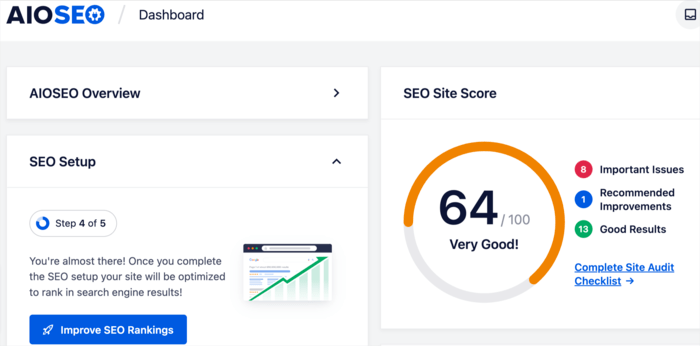
Typical examples of the features and tools you’ll have at your disposal include:
- An SEO Audit Checklist: This helps you analyze your entire WordPress site to detect critical errors. It also gives you actionable insights to boost your SEO for improved rankings and increased traffic.
- IndexNow: Get your content instantly indexed, increasing your chances of ranking faster.
- Smart XML Sitemaps: Automatically generate different types of sitemaps to notify all search engines of any new content.
- Crawl Cleanup: Improve the effectiveness of search engines crawling your site by eliminating unnecessary URL parameters.
- Local SEO: Boost the rankings of all your Business Listings and get featured in Google’s Knowledge Panel and Google Maps.
- Custom User Roles: This feature enables you to manage access to important SEO features without the need to hand over complete control of your website.
With these features and more, ranking your content is much easier. This is for both your local and international al pages.
Again, if you need help installing AIOSEO, check out the installation guide here.
WPML
Another powerful WordPress plugin that can help you with your multilingual SEO is WPML.
WPML is one of the best plugins for running multilingual sites and is trusted by over 1 million websites. It comes pre-configured with over 65 languages and enables anyone to translate their websites into different languages.
With WPML, you can translate most important elements on your website. Examples include menus, categories, breadcrumbs, and much more. The plugin also automatically injects hreflang attributes into your content.
The combination of a powerful SEO plugin like AIOSEO and a reliable translation plugin like WPML makes setting up a multilingual site much easier.
Use the Right URL Structure
One of the first tips for setting up a multilingual website like a pro is properly setting up your site structure. Because your site will serve a lot of similar content, a poor URL structure could result in duplicate content.
How can you solve this issue?
You can optimize your site structure and URLs for multilingual SEO by adopting one of the following website structures:
- General Top Level Domain (gTLD) like www.example.com
- Country Code Top Level Domains (ccTLDs) like www.example.fr
- Subdomains like fr.example.com
- Subdirectories like www.example.com/fr/
Each URL structure has its pros and cons, so do your research to see which setup is best for you.
Create Multilingual Sitemaps
Once you’ve set up your multilingual website, you must ensure you create an optimized multilingual sitemap.
A sitemap is a list of all your important URLs and is useful in directing search engines to the pages they should prioritize as they crawl your site. When setting up your multilingual site, you must create a detailed sitemap that includes URLs for all the languages and regions you’re targeting. Doing so will help search engines find and index your international pages.
While this may seem daunting, it’s actually quite easy if you have the right tools.
One of the reasons why all SEO professionals use AIOSEO is because it has a powerful sitemap generator. This makes it easy to generate sitemaps for all the pages on your website, even if you have no technical knowledge.
You can create or edit your sitemaps by going to your AIOSEO Dashboard » Sitemaps and then choosing the type of sitemap you want to create.
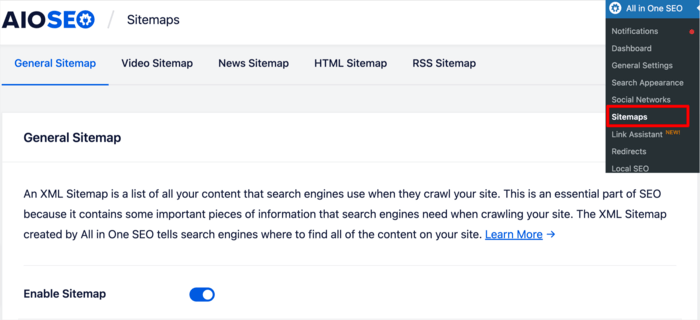
Check out this article for detailed instructions on how to create a sitemap.
And if you have multiple pages you want to include in your sitemap, even if they’re not in WordPress, you can do so by uploading a CSV file of your URLs.
Once your multilingual sitemap is set, it becomes easier for you to rank for localized keywords as search engines can easily index your local content.
Reach Your Audience Wherever They Are with Multilingual SEO
Reaching a global audience requires you to get your multilingual SEO right. Avoiding the 5 multilingual SEO mistakes outlined above is essential if you’re to do just that. Also, remember to set up your website for success by following the setup tips we’ve looked at.
We hope you found this article useful in helping you implement multilingual SEO right. You may also want to check out our ultimate guide to WordPress SEO or our list of the top WordPress plugins we recommend for every site.
Disclosure: Our content is reader-supported. This means if you click on some of our links, then we may earn a commission. We only recommend products that we believe will add value to our readers.
